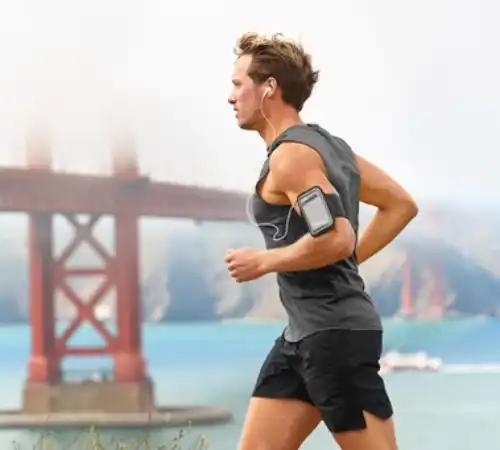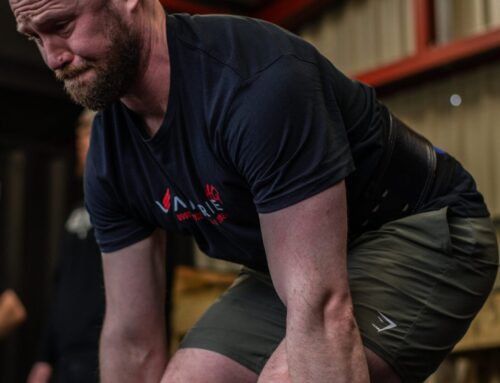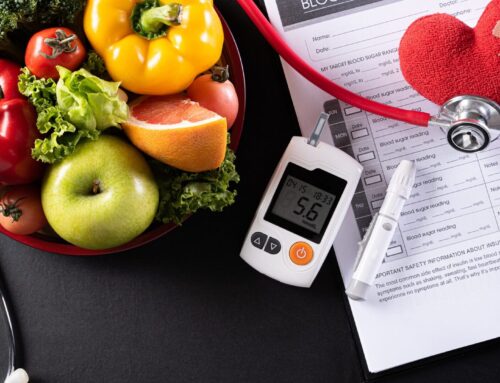Are you just exploring longer duration exercise and unsure of what to eat before, during or afterwards?
Personally I under ate for years and suffered from average performance and sore muscles after exercise thinking that it was just the way it should be. Now I know differently and I hope this blog helps you in not repeating the same mistakes I did.

Some subtle differences
An average gym session or fitness class rarely lasts for over an hour and you are almost never working continuously without a break.
Cycling or running for over an hour continuously is a slightly different territory. If you are not taking on board the right fuel before, during or after extended bouts of exercise then you risk making things harder for yourself during the event or afterwards (I’m sure you have all experienced trouble walking down the stairs).
The good news is the solution is relatively simple and you can tailor your ‘fuelling strategy’ to suit your own personal preferences
In this blog, I’m going to walk you through 5 simple steps you can try out the next time you hit the road before walking you through an example from my own cycle ride this weekend.

5 steps to fuelling your endurance exercise performance
1. Properly hydrate
When you exercise you lose fluid and electrolytes through sweat. This can lead to dehydration which in turn causes fatigue because your heart is forced to work harder, ultimately making exercise more difficult.
Unlike the rest of the time, thirst is unfortunately not a good indication of how hydrated you are during exercise.
What can you do to prevent dehydration?
-
Drink 600-800ml of water before you head out. Ideally 2-3 hours before, but get in what you can
-
Drink during your ride/run BEFORE you get thirsty
2. Eat a carbohydrate rich meal beforehand
A lot of people like to train on an empty stomach, I do too. This is fine if the planned exercise is going to last less than an hour as your body can use the energy stores it has from your last meal.
To make sure you have enough fuel in the tank you can consider topping up these energy levels with a carbohydrate rich meal 2-4 hours before exercising.
Lower fibre carbohydrates are better here so think Rice Krispies, toast with jam and honey, a banana, whatever you find sits best on your stomach and doesn’t cause you digestive issues.
It is also probably best to avoid fatty foods at this particular pre-exercise meal as they can slow digestion.
Finding what works best for you will require some trial and error so don’t decide the morning of an event is a good time to introduce a new breakfast, try it in training beforehand.
3. Aim to replenish your energy stores with carbohydrate during your ride
For each hour you exercise aim to eat or drink 30-60g of carbohydrates per hour of exercise (if exercise is going to last for 3 hours or more, you can increase this number to 90g per hour).
What does that look like?
-
A bottle of Lucozade Sport (NOT sugar free/diet)
-
A banana
-
A handful of jelly beans or dried apricots
-
An energy gel
Have a guess at how long you will be out for and take one of those things with you for each hour. If in doubt take one extra something just to be sure.
Eat one portion on the hour, each hour.
Again, try these out before embarking on a big event so you know how your body will digest them.
4. Eat sufficient calories to aid recovery
Once you have finished your ride make sure that you replace, the energy (calories) that you have burnt.
How do you know how much energy you have used?
-
Check your smart watch/exercise tracker
A word of caution!
Exercise watches are reasonably accurate at predicting calories for continuous exercise, provided they have also recorded your heart rate.
However, any method will not usually take into account the energy that you would have burnt anyway so are overestimates. If you are taking this approach and gaining weight when you do not want to then you may need to look into more detail (but that is the subject of another blog)
If performance and recovery are your goal then err on the side of eating more rather than less!
5. Consider an appropriate protein intake
You may think that protein is just for gym bunnies and bodybuilders but it is incredibly important for endurance athletes too.
It helps to repair the muscles as they have worked incredibly hard doing thousands of repetitions either turning pedals or taking running strides.
1.6-2.0g of protein per KG of body weight per day is appropriate.
What does this look like?
There is 20g of protein in:
-
100g chicken (raw weight)
-
1 scoop of whey/vegan protein
-
150g tofu
-
A pint of milk (plus it contains carbohydrates and electrolytes to further aid recovery)
At a weight of 60kg that would be 100-120g of protein per day. 20-30g of protein per meal (depending on how many meals you eat).
6. What about coffee and cake?
This one is probably more for the cyclists…

We all love a pit stop for a good coffee and a slice of cake and it’s definitely part of the experience and culture (as well as a chance to rest those legs!)
Caffeine is well known for masking fatigue so that latte will definitely give you a boost. Like everything though excessive intake can be an issue. Don’t rely on caffeine, ensure you have applied points 1-3 first!
Most people would benefit from cutting out caffeine after 2pm (ideally earlier) as it takes a long time to diminish and can disrupt sleep. Poor sleep means poor recovery which leads to sore muscles and makes it difficult to improve our fitness.
If you’re planning a sportive then it may be a good idea to abstain from caffeine the night before to ensure you get a great night’s sleep!
As I’m sure you’ll know cake has a fair amount of sugar in it (simple carbohydrate) but it also contains fat which means it has plenty of calories.
This is no bad thing, as a long ride will burn through a ton of calories that need replenishing, BUT it is worth bearing in mind that a coffee shop slice of cake is anywhere between 300-800 calories (depending on the size of the wedge!).
An example from my 2 hour ride this weekend
06:30
Wake up, drink 500ml of electrolyte (I use one from www.awesomesupplements.co.uk).
Eat a bowl of Rice Krispies topped with a handful of raisins and semi skimmed milk.
Prepare snacks – 1 banana, 1 granola bar, 1 bottle of Lucozade Sport (or other electrolyte drink with added carbohydrate – check the label).
07:30
Start ride.
08:00
Sip water and continue to do so every 20 mins or so.
08:30
Eat banana.
09:00
Switch to drinking Lucozade Sport.
09:30
Get home and drink some more electrolytes.
Check Strava for estimated calorie burn and add in foods that are roughly the same number of calories on top of my usual meals.
Now you’re ready to start figuring out your very own strategies to properly fuel your performance and boost your recovery.
Eat to perform and your body will thank you!
If you have any questions or are unsure of what might work for you then let me know in the comments. I’d love to help out!…




[…] If you want some tips on fuelling your own running then check out my blog on fuelling endurance. […]